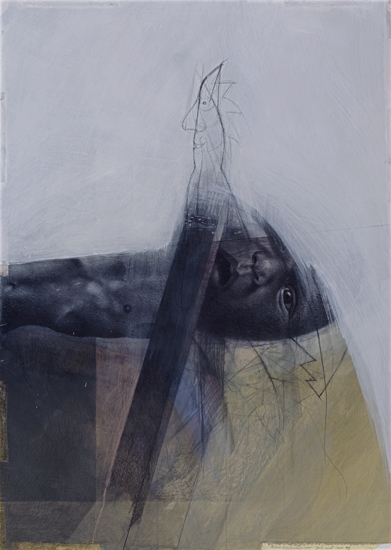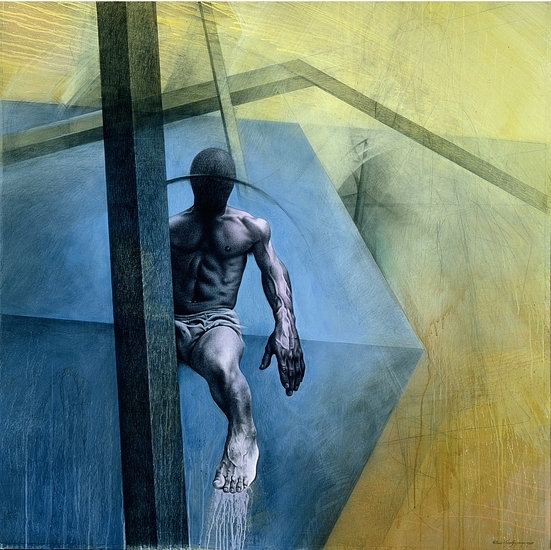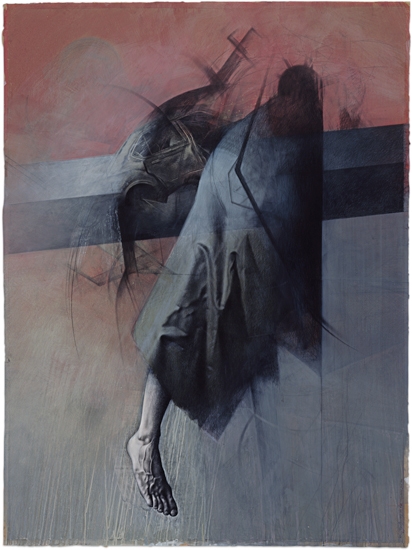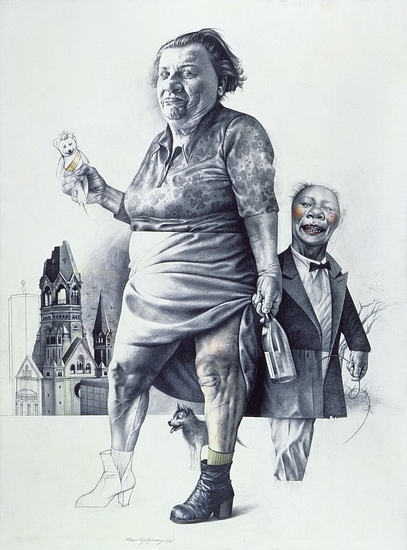telephone drawings
named that way, because this works have been created "en passant", i.e. during a telephone call.
“....when i’ve been on the phone for a long time, i invariably reach for a pencil. regardless of the conversation and as an accompaniment, i start drawing on any piece of paper that happens to be in the vicinity in an absent-minded way, although a term or a word that someone said can also provide inspiration while i draw…”
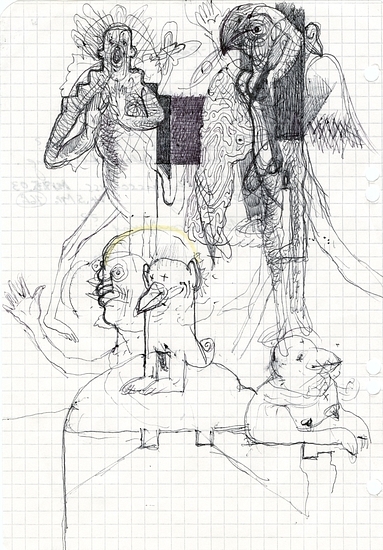
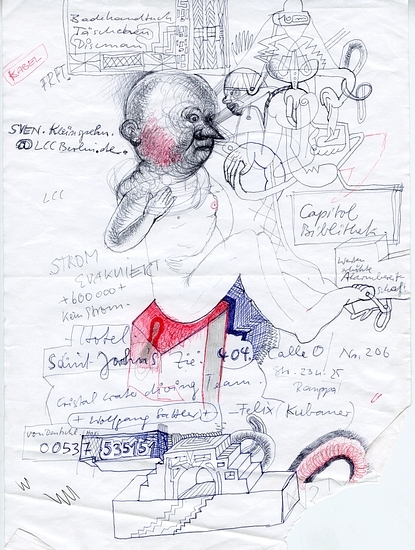
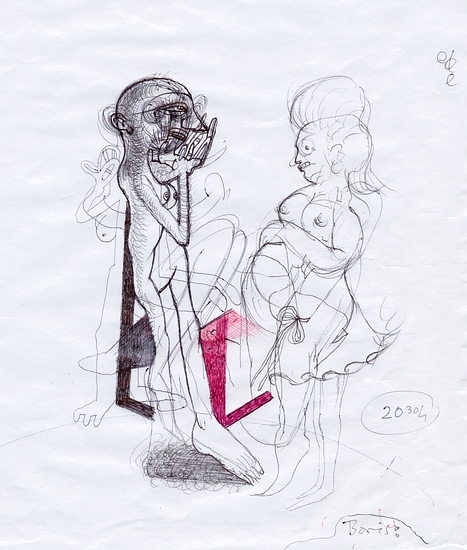
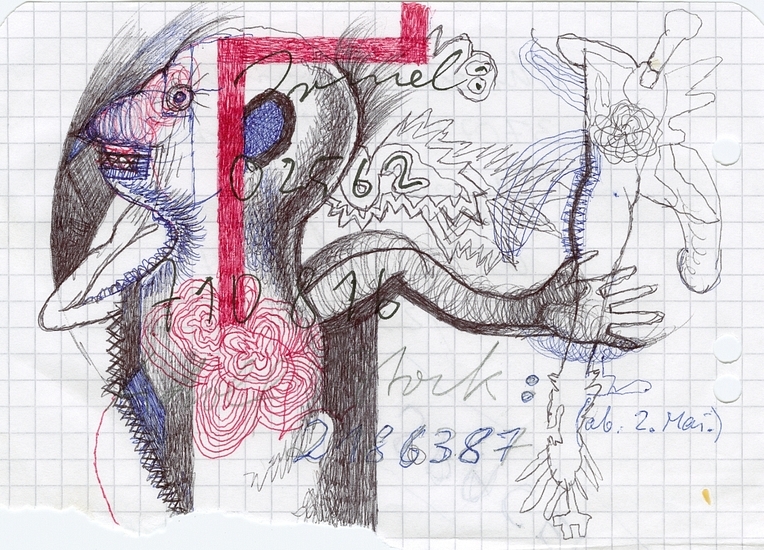
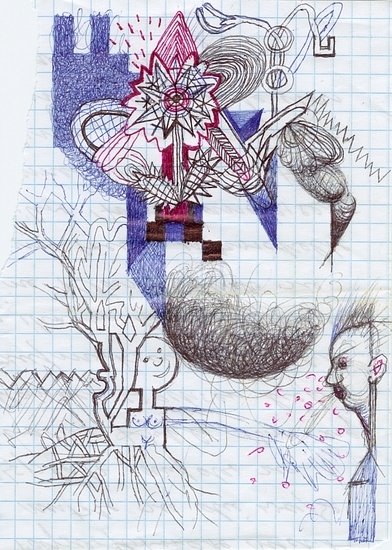

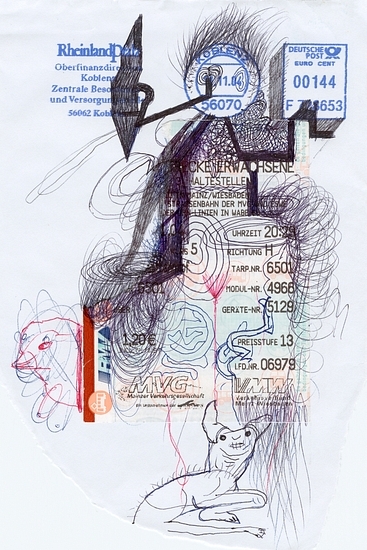
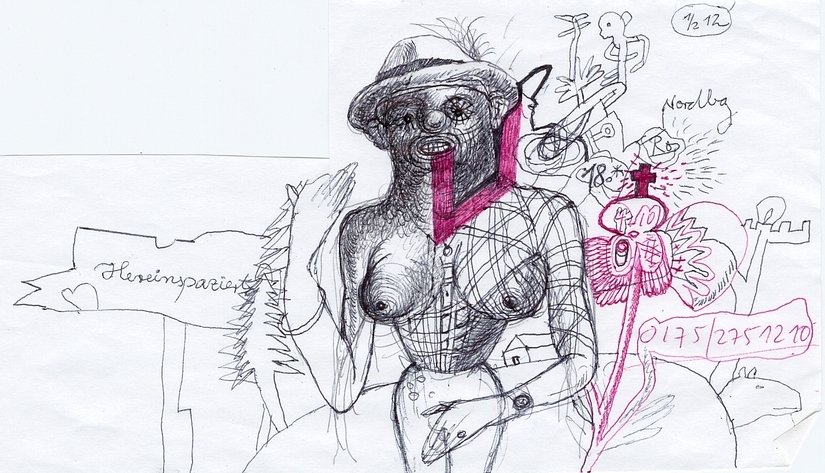
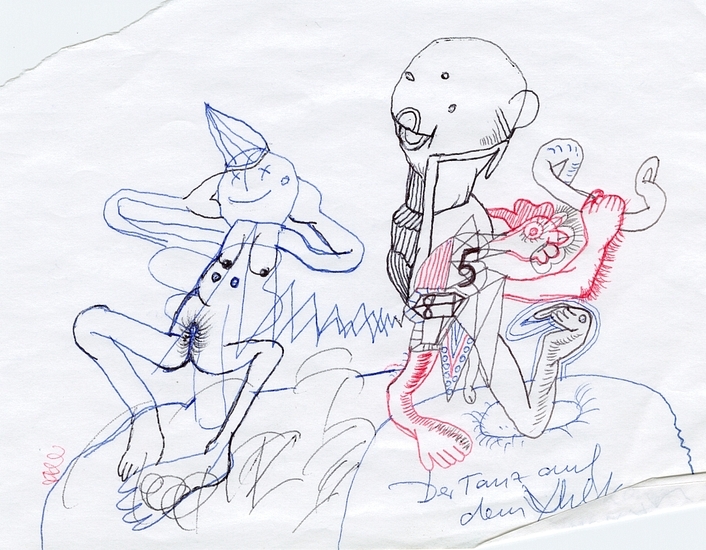
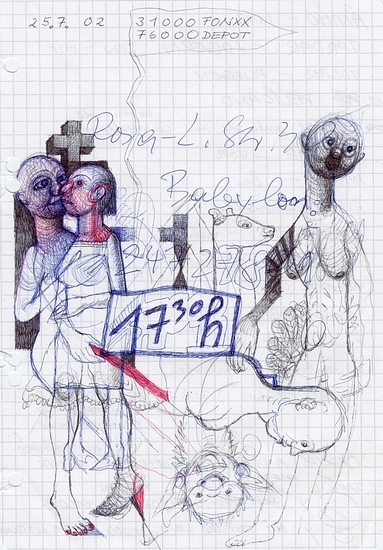
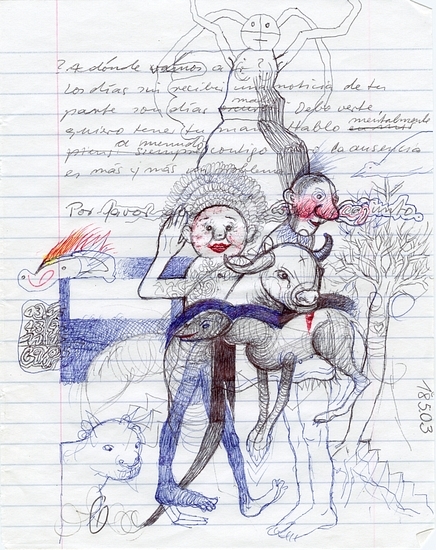
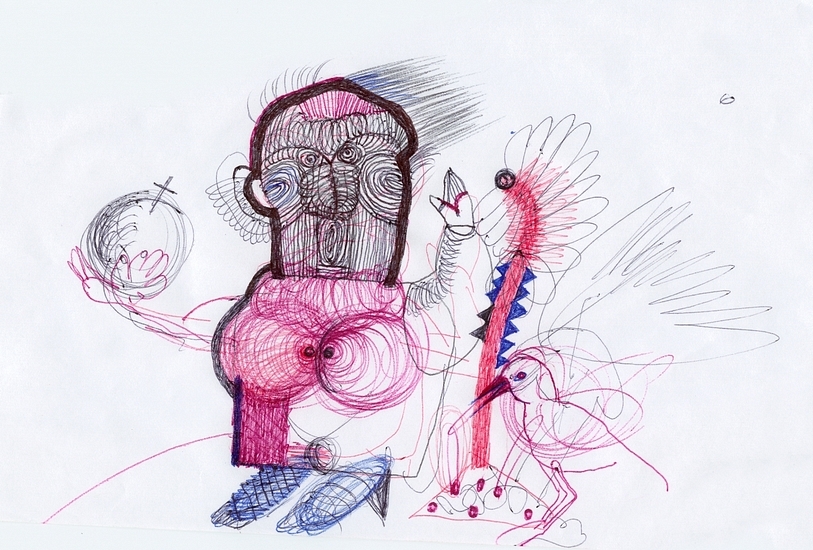
postcards, envelopes
ten revised postcards, ca. 10 x 10,5 cm. ten revised business envelopes, ca. 21 x 11 cm.
postcards: “....on my travels i also feel the urge to draw. i need nothing more than a ballpoint pen, fine sandpaper and the postcards that i buy at the nearest newspaper kiosk. in the hotel room, i move the table to the window and have fun changing the surface of the postcards with the sandpaper and pen until the postcard turns into something completely new, completely different. i later developed this technique further in the studio, pasting things on, for example...”
business letter envelopes: “... the address window in business letter envelopes remind me of the little doors in the advent calendars of my childhood. i began to play with the envelopes and include them in my work by drawing on them and adding postage stamps, a logo, other stamps, etc. next, i put material such as glossy images, magazine photos and my own small doodles in the envelope under the address window. everything eventually fused into a poetic complete image, and something destined for the dustbin transformed into something different, unique and new…”
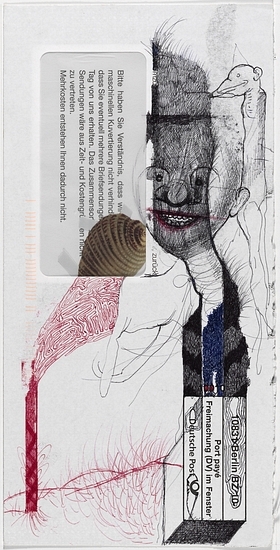
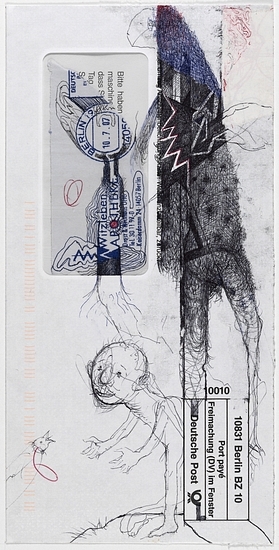
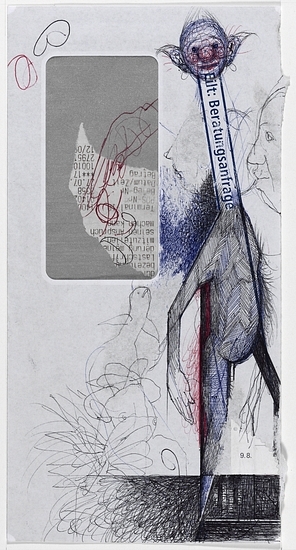
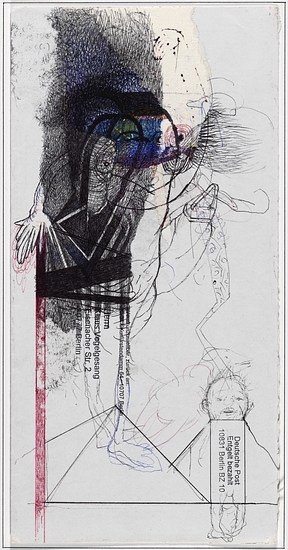

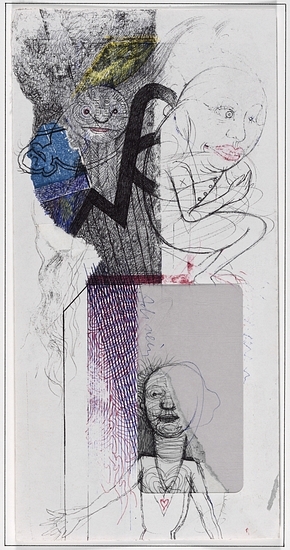
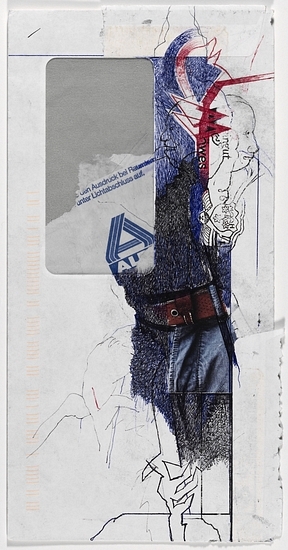
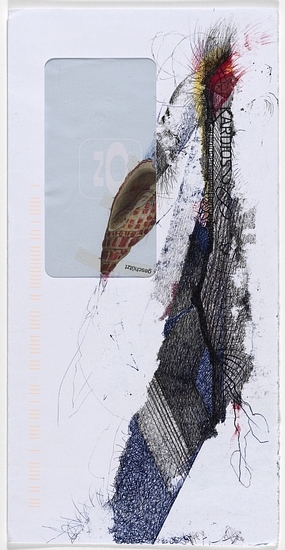

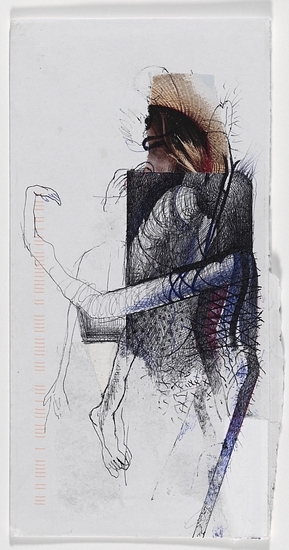
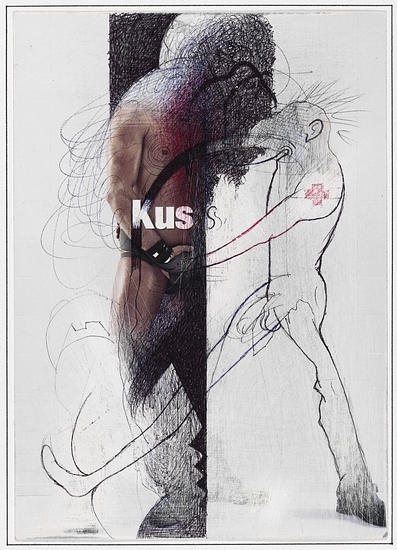
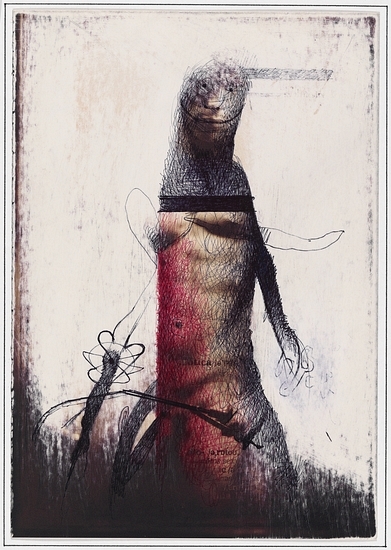
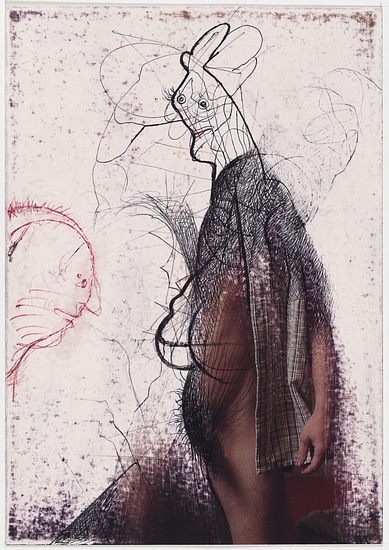

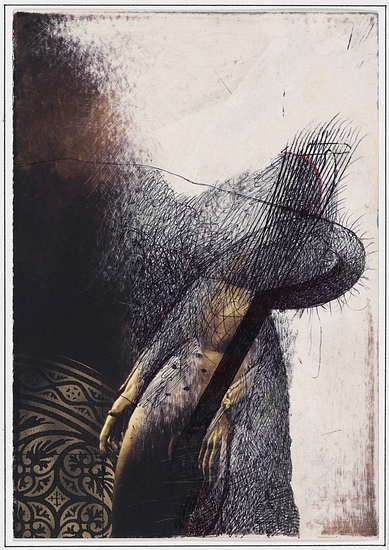
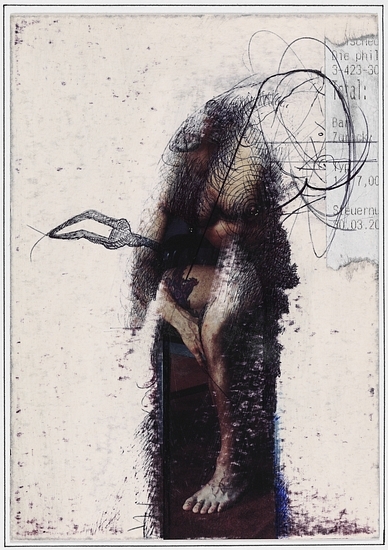
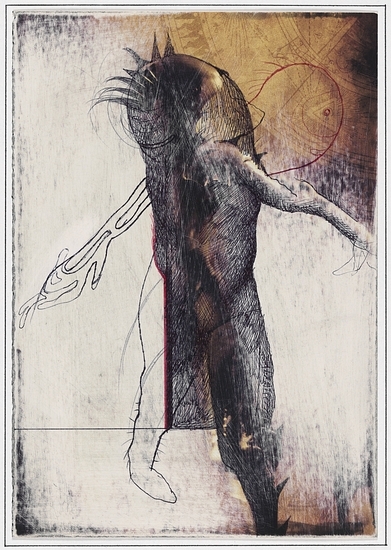
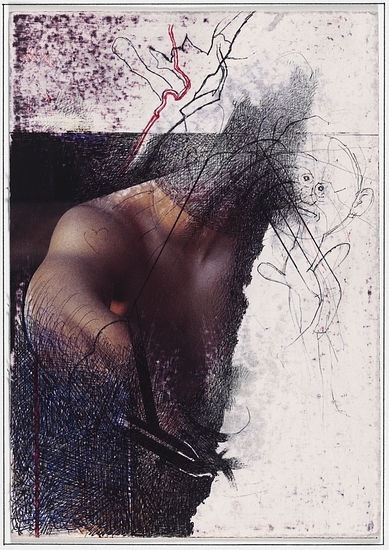
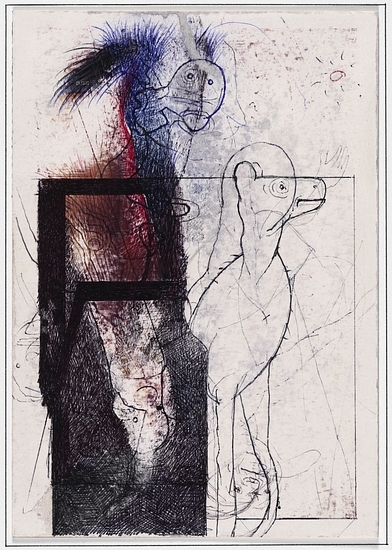
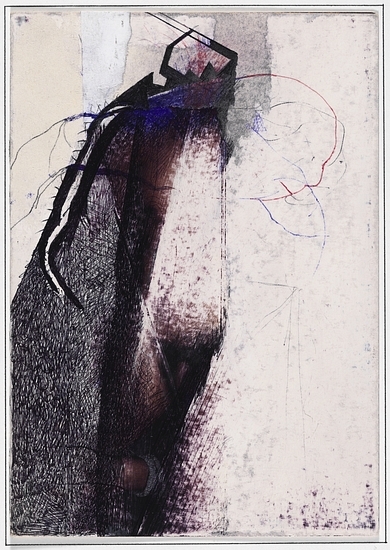
small-size works
small-size works, primarily pencil on paper, ca. 29 x 22 cm.
“....on my travels through marocco and tunesia, i have always picked up paper from the ground: torn playing cards, pages from school notebooks, cigarette packets and more. later, i glued these found objects into a sketchbook, integrating it into my drawings until it became part of them – in this way, i created picture diaries. i adopted this process and used/use it to create my “small works,” in which intense drawing, marks and hatching, and inserted vouchers, receipts, tickets, etc., fuse into one image. a type of collage technique that i combine with drawing. i repeatedly rework, tear and mark mundane, everyday documents until, bereft of their sterility, they unite with the drawing and background to become new pictorial events.”
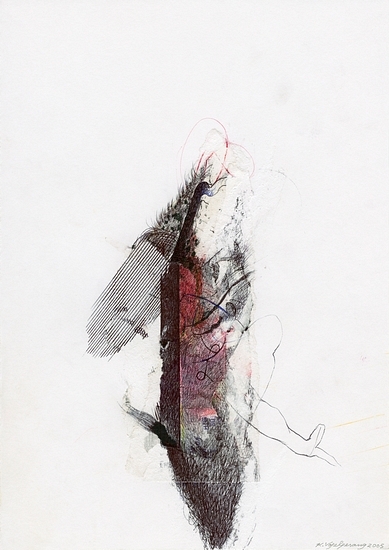
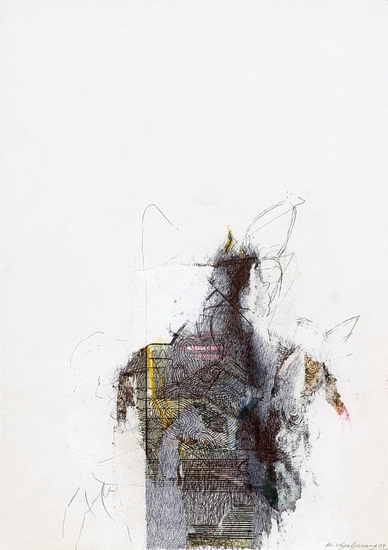
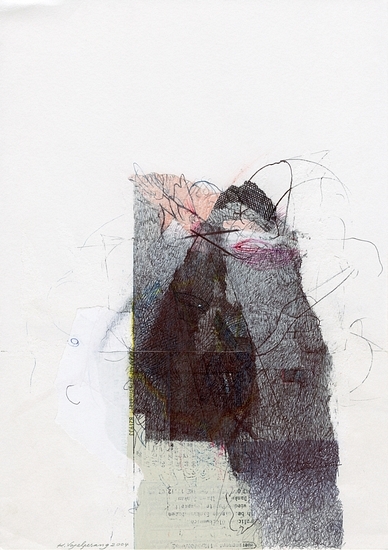
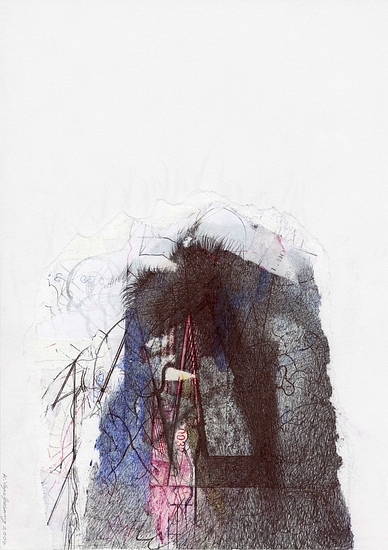

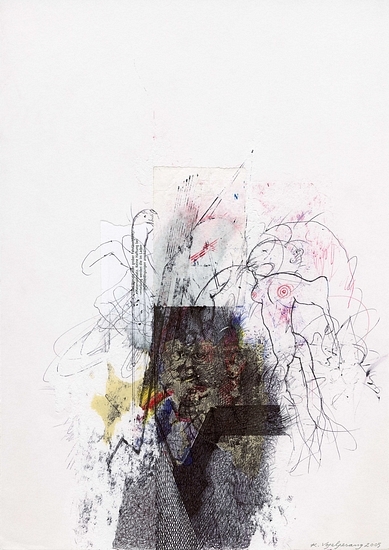

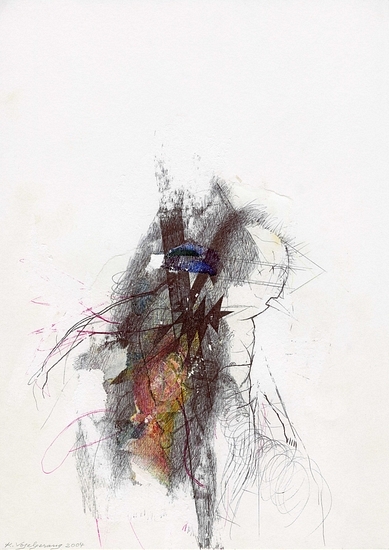

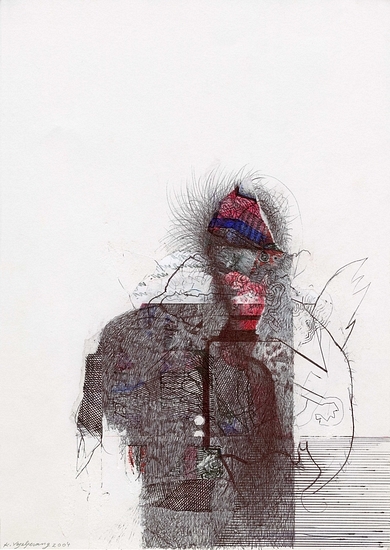

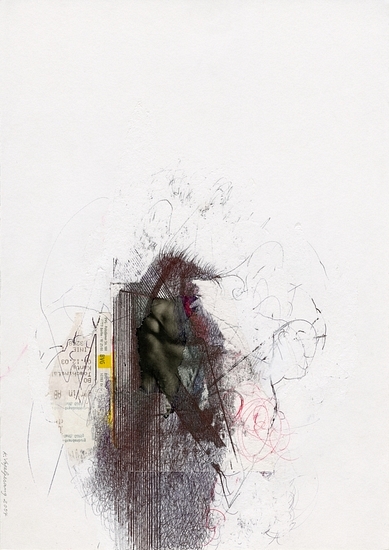
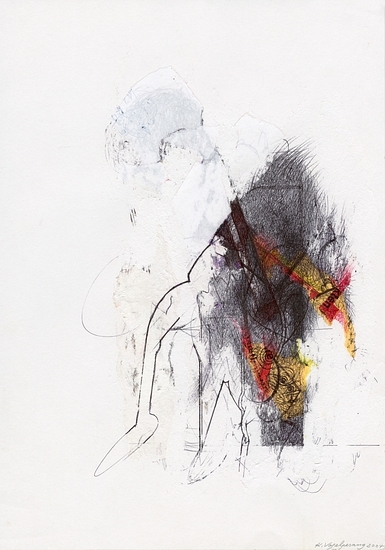
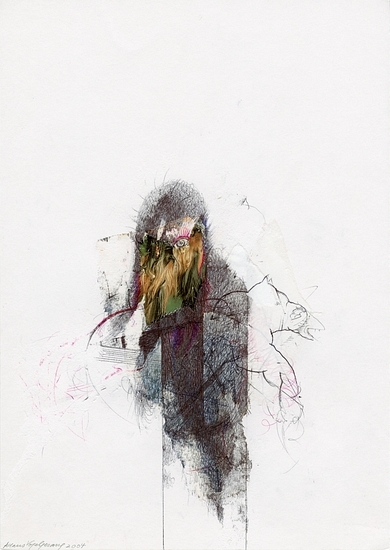
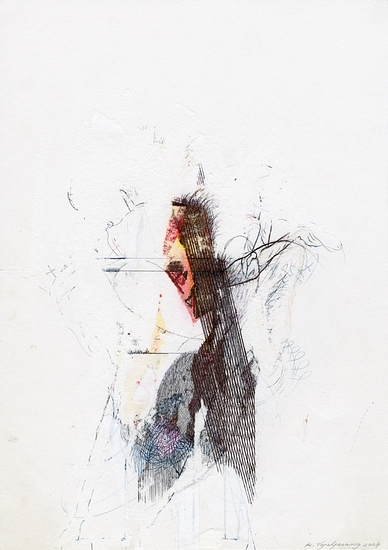
sloppy watercolors
15 works from the series "sloppy watercolors" (2011/2015) ca. 31,5 x 23 x 5 cm.
“.... i ‘draw’ with a brush, ‘paint over’ with chalks and opaque paint, wipe everything away again with a sponge, for example; hold the sheet under running water, paint over more areas, draw on it, erase and repeat – until i have achieved a state that matches my pictorial needs. i leave all of the traces of the creative process that have worked their way onto the surface like a ‘layer of grime’ right where they are...”
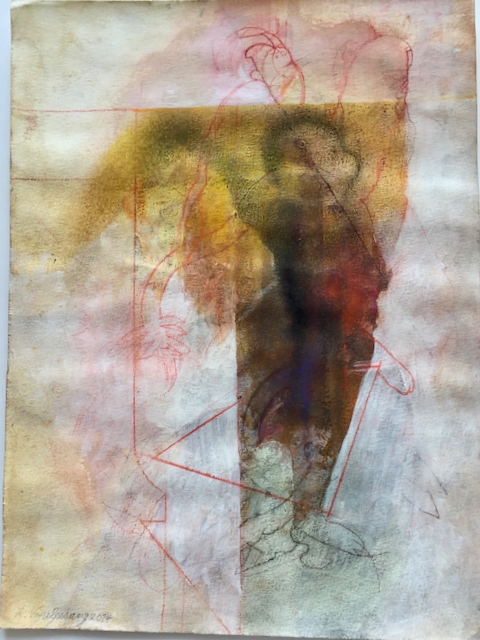
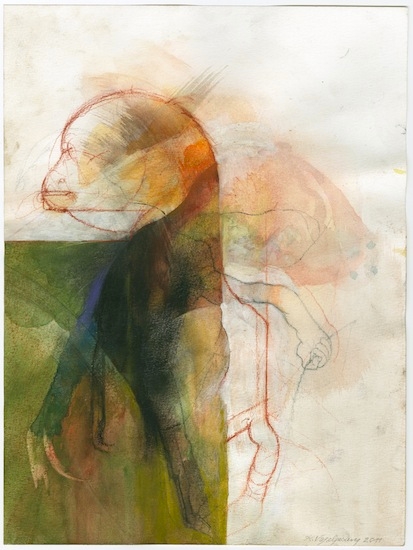
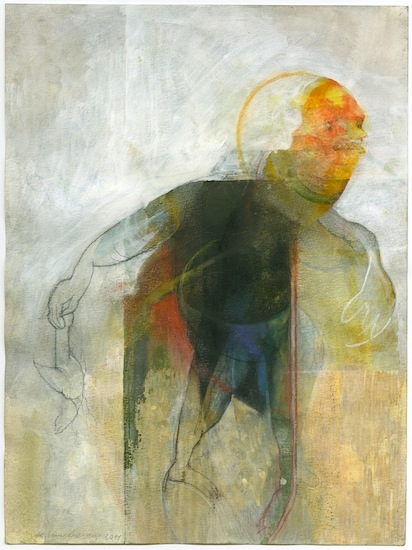
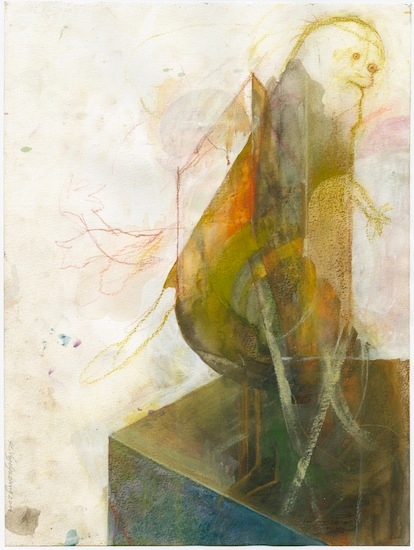
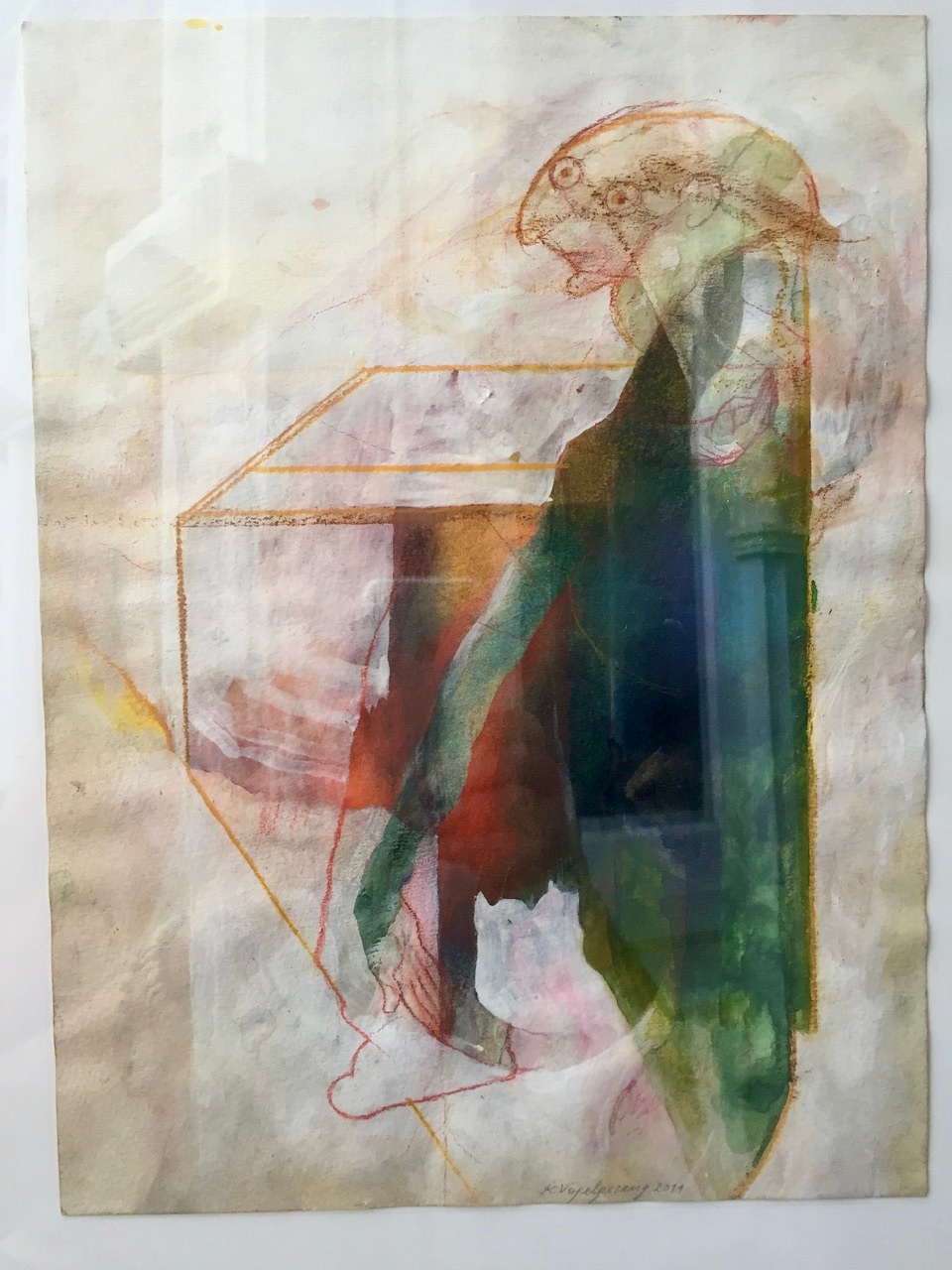

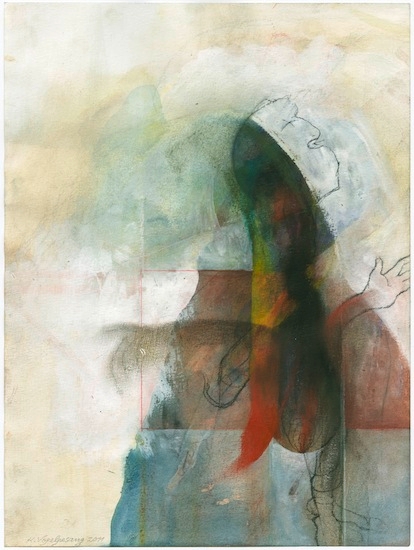

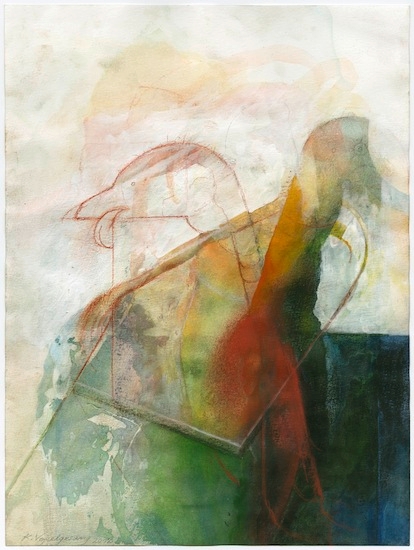
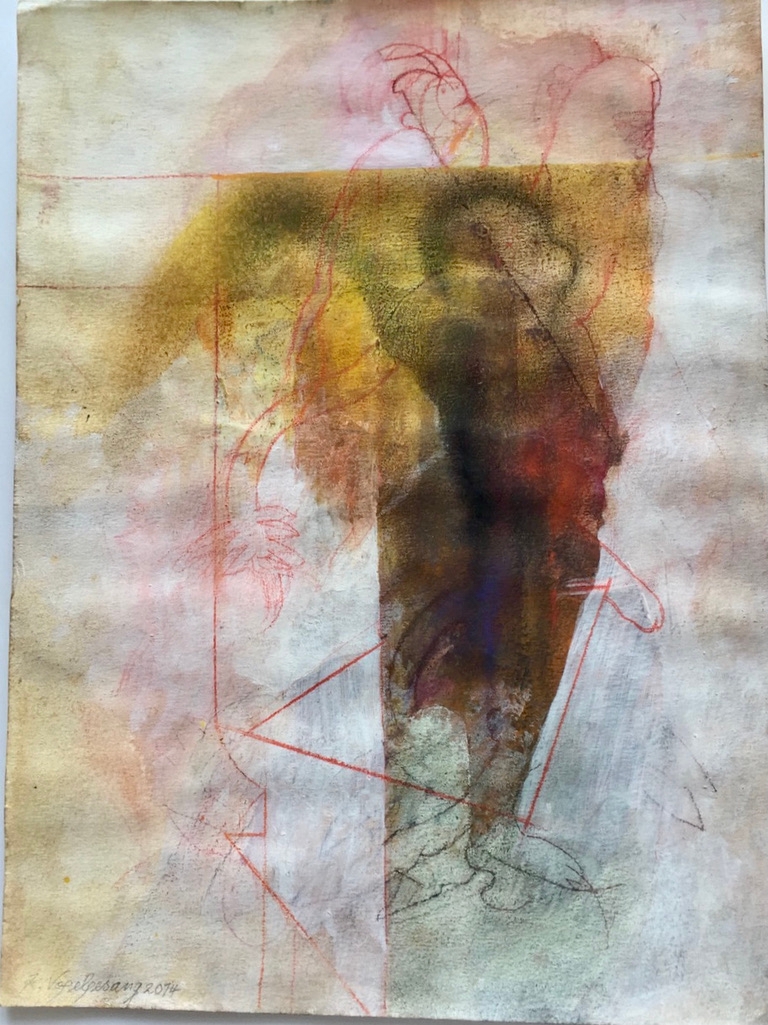

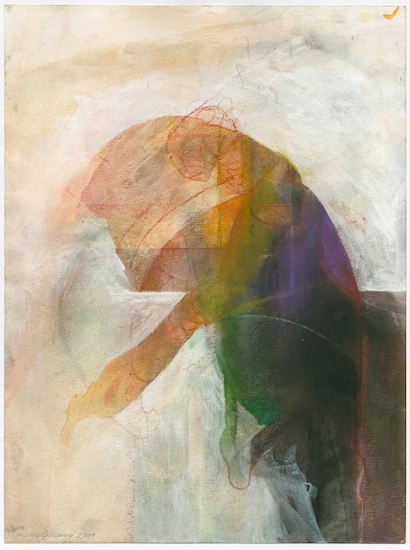
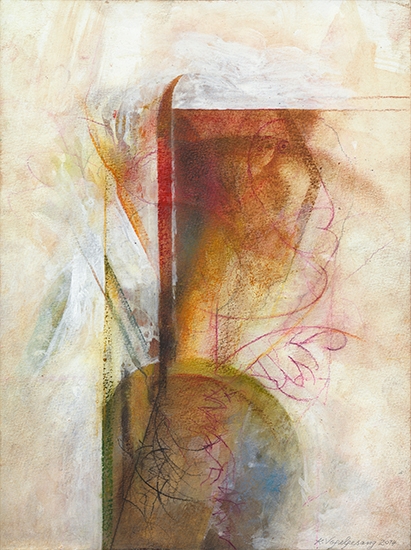
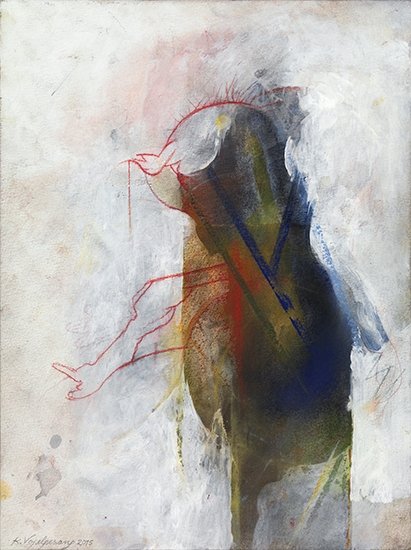
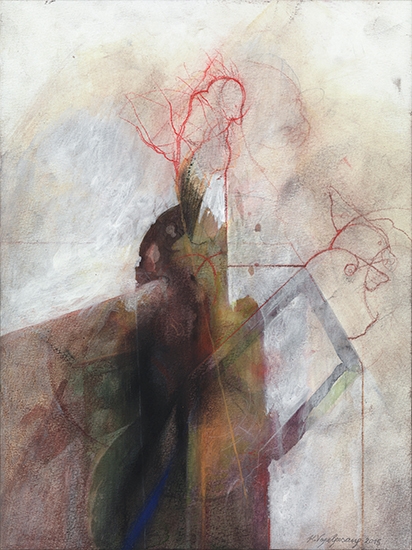
large-size works
all works: acrylic paint, graphite pencil and chalk on pasteboard, ca. 200 x 150 cm.
“....i work on a wall where there are almost always three sheets of white bristol board in portrait format. they measure around 200 x 150 cm and hang in a row. my materials consist of a bucket of water, brushes, sponges, acrylic paint and lots of chalk. the three panels sometimes remind me of the folding altars in old churches and of the holy trinity – memories of my devout catholic childhood. i work on all three at the same time. if i can’t make any progress on one surface, i switch to another. each work is independent of the others and not part of a triptych. my sparse, simple work materials correspond to my need for manageability and focusing on the essentials. on these boards, i negotiate my themes and transform them into images, using them to create what i am consciously or unconsciously preoccupied with and make it visible. visions or two-dimensional events as visual offerings for the eyes of the beholders emerge. my self-defined mission: to create the images in a way that gives them the power to seduce their beholders into coming to grips with what they are seeing on the level of perceiving and experiencing…”
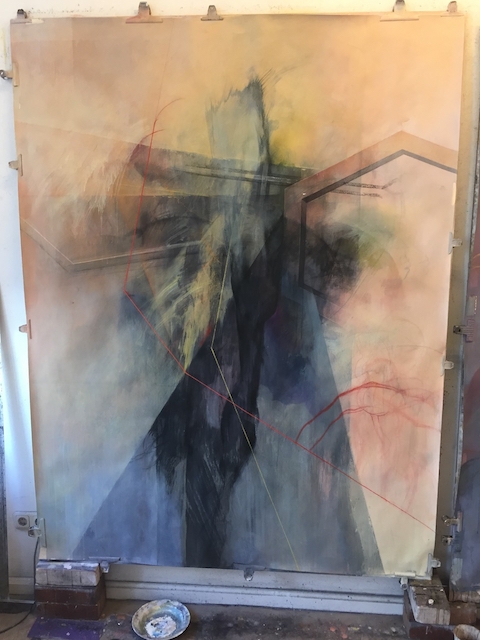
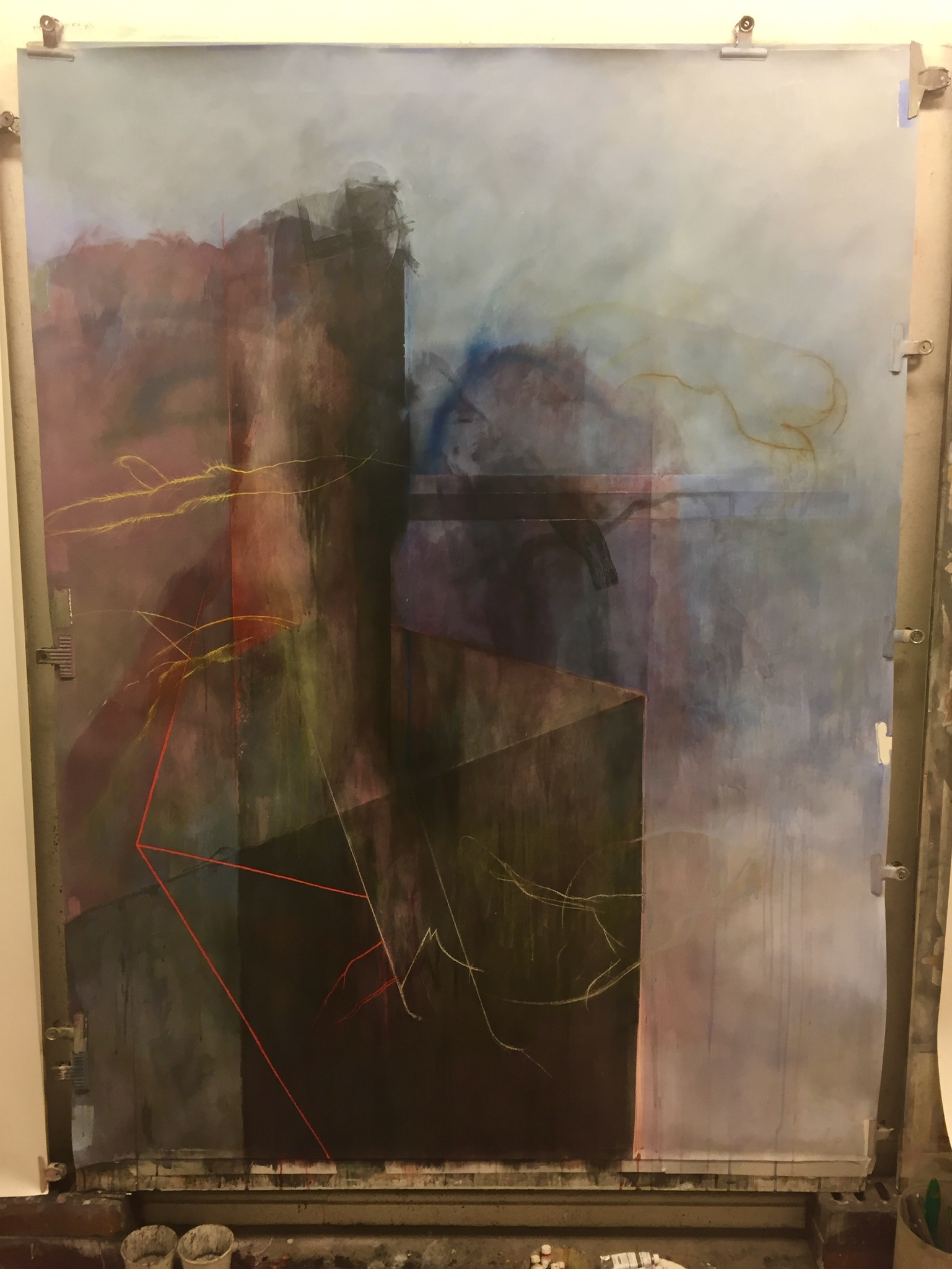
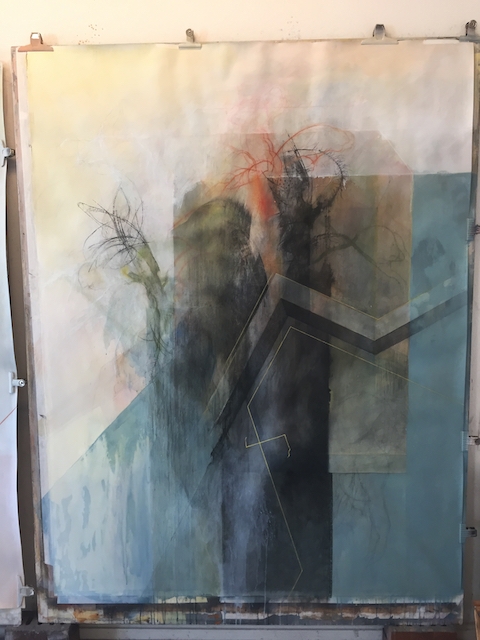
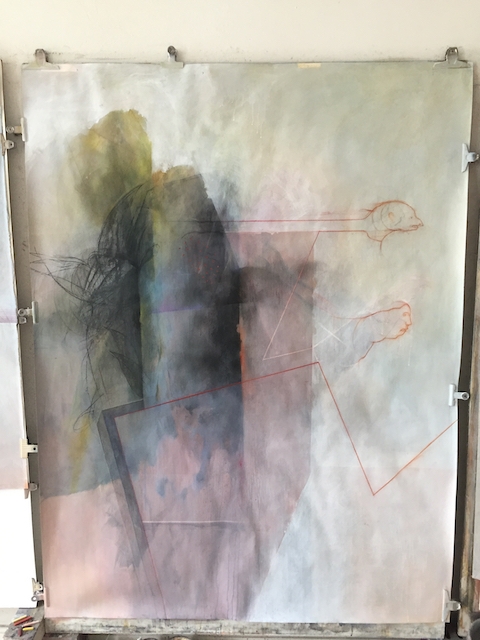
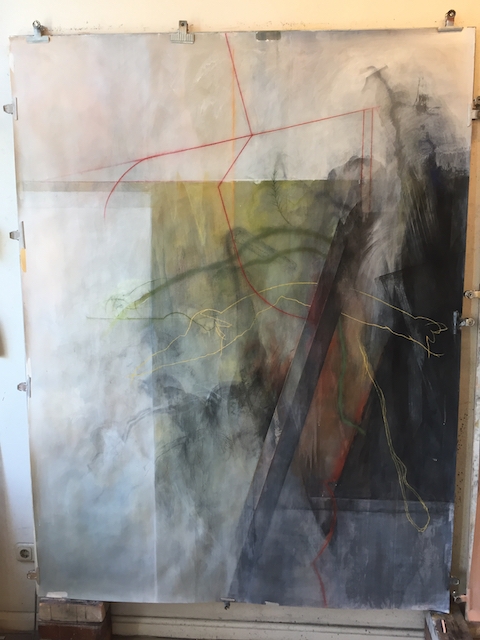
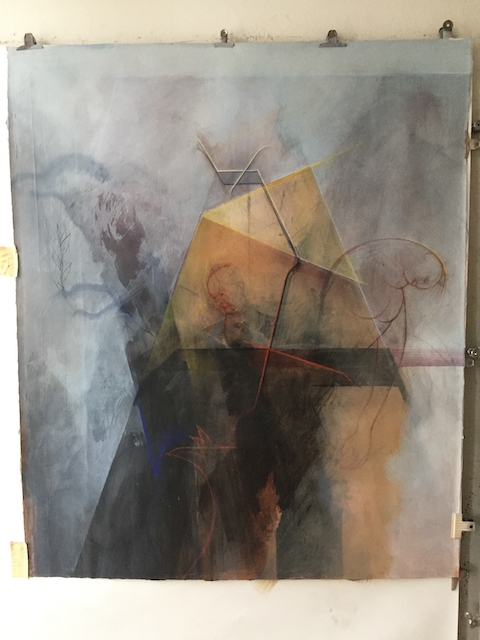
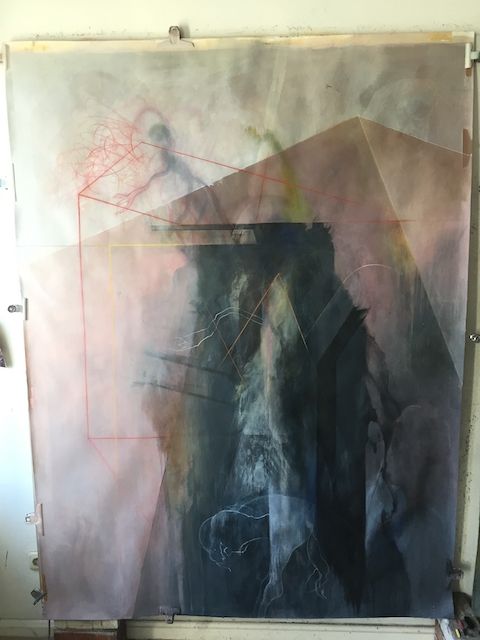
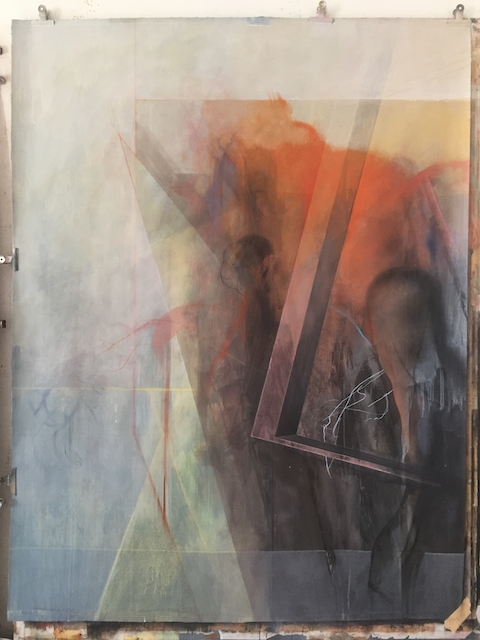
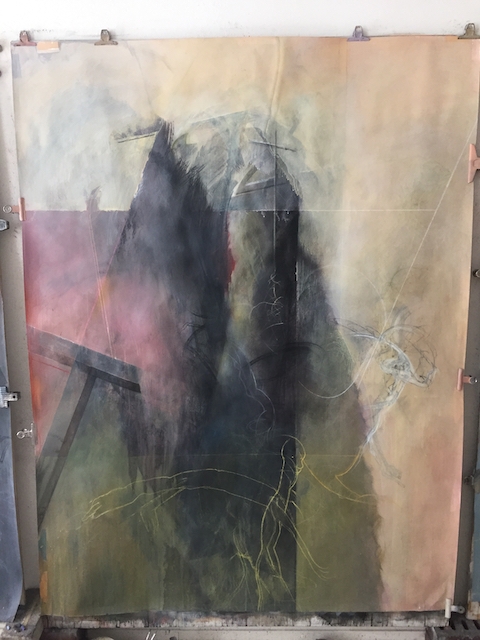
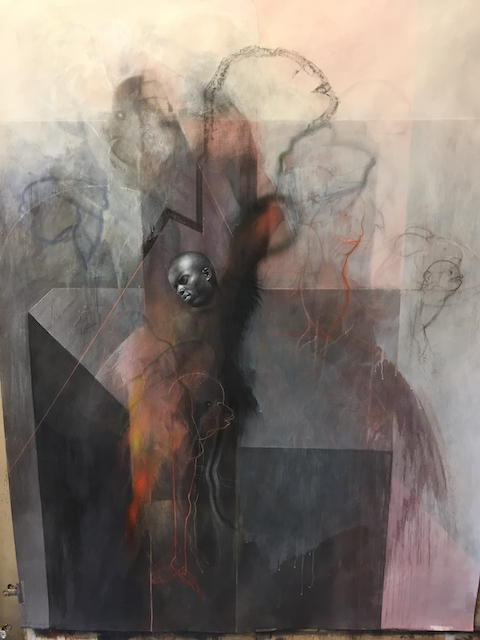
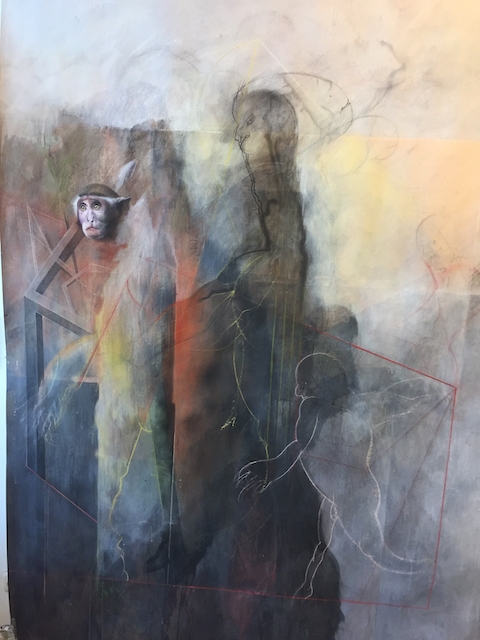
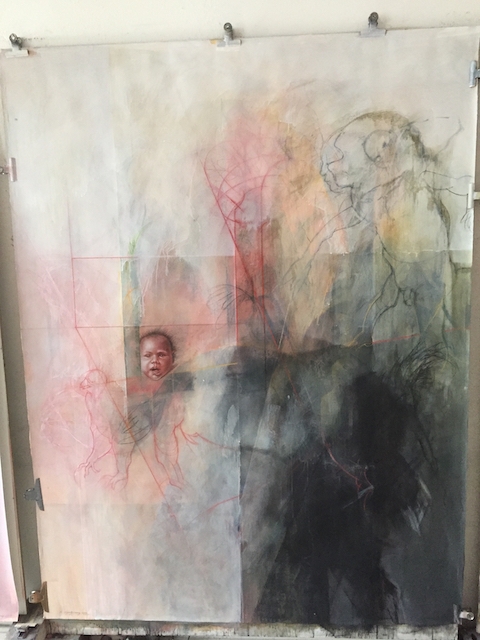

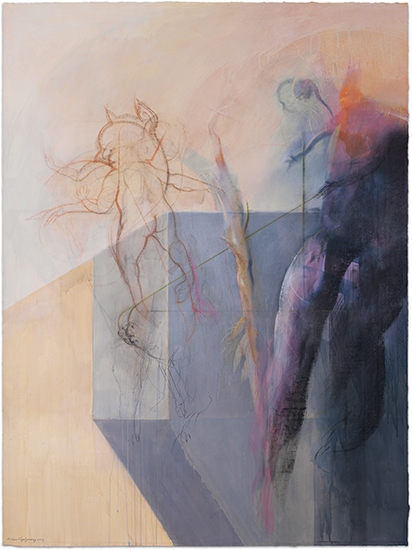
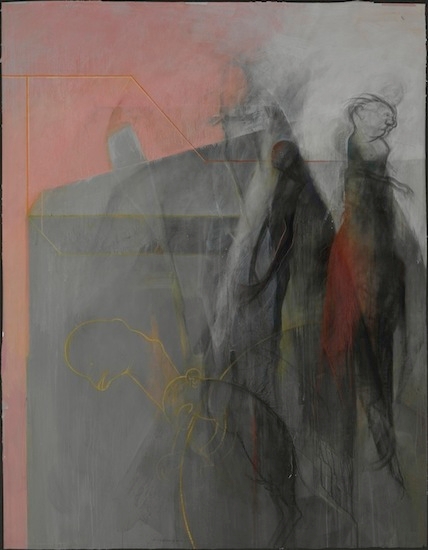
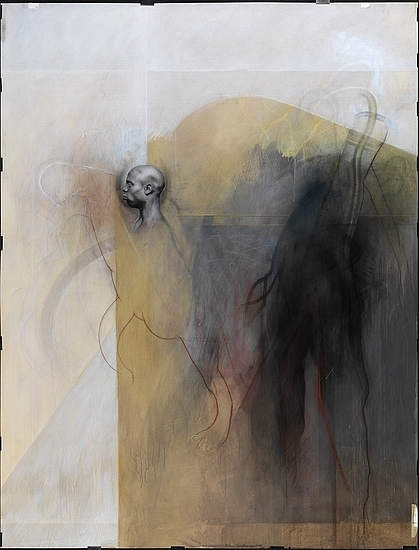
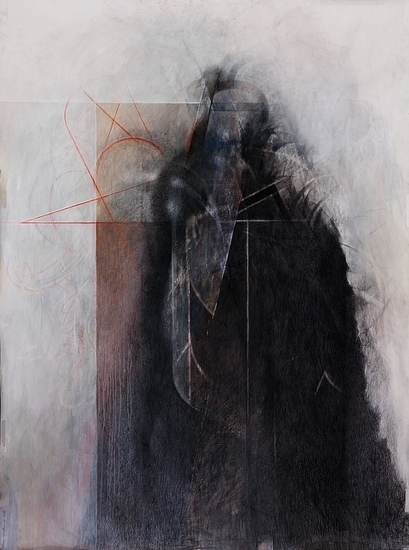
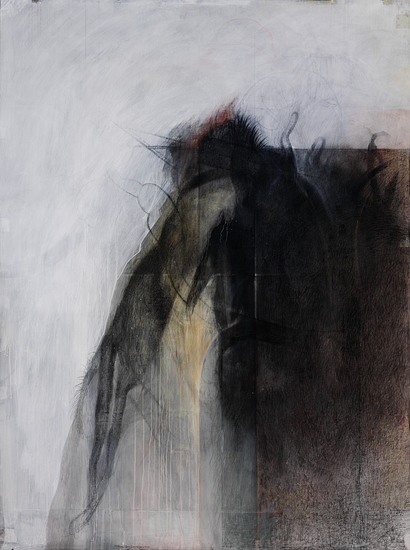
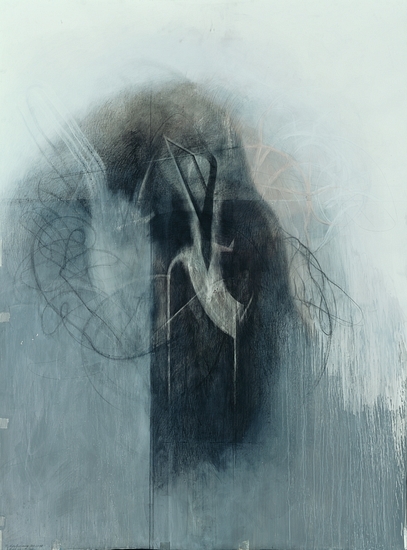
critical realism
five examples from the creative phase of so called critical realism.
“....was formulated in the middle of the 1980s. i was looking for new opportunities of expression that corresponded to my new attitude towards life and awareness. colour entered my work as an independent element; my themes and picture content changed to reflect an image of people and the world that had developed further. art connoisseurs still associate my name with critical realism, since i was one of the artists who represented this movement. this realism is an important part of my history as a maker of visual images, and i achieved a certain degree of renown with it back then. but i no longer felt/feel the need to ‘serve’ expectations like this. furthermore, i was slowly retreating from the art scene: at the beginning of the 1990s i started to teach in mainz, then i roamed around morocco and last but not least, began working in my studio in berlin. a friend of mine, an art historian, recently called my current works ‘pictures from the realm of shadows’ and i’m quite happy with this label. i have now retreated to my berlin studio, concentrating on my work and living outside of the art market or the art scene...”
